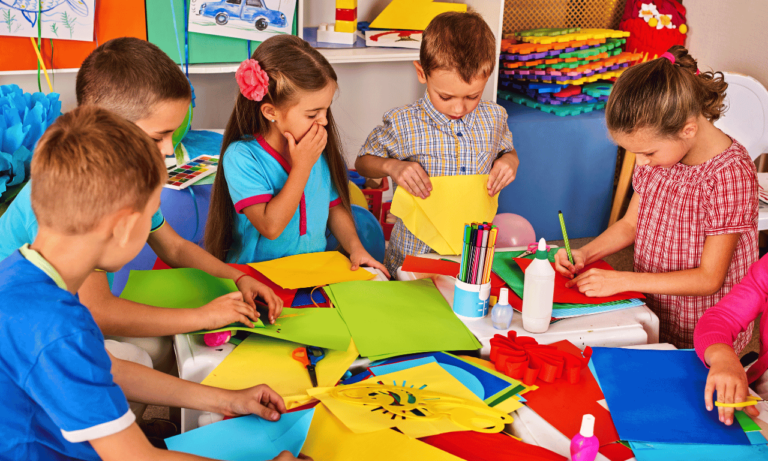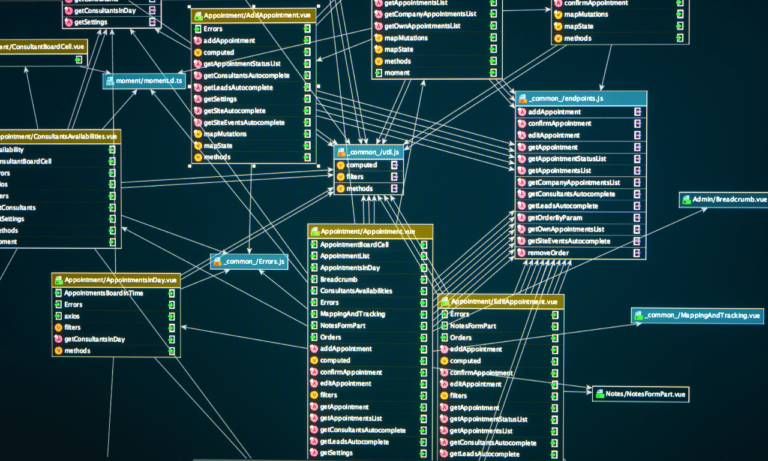Phone:
(+65)8319-0742
In the quest for academic excellence and professional preparedness, the emphasis on promoting collaboration in learning has never been more pertinent. With the corporate and scholarly worlds valuing adept team players, the focus has shifted towards enhancing collaborative learning experiences. Collaborative Learning Scaffolding is at the forefront of this educational revolution, providing the strategic framework necessary for students to excel in teamwork endeavors.
From the traditional classroom discussions to the dynamic online forums, the application of effective scaffolding techniques serves as a catalyst for collective intellectual growth, enabling students to tackle complex challenges through synergy. Allow us to unveil the benefits of these techniques that harness the power of unity in learning and map a pathway to a harmonized educational landscape.
Key Takeaways
- Grasping how Collaborative Learning Scaffolding fortifies the collective pursuit of knowledge completion.
- Identifying strategies for promoting collaboration in learning within diverse educational settings.
- Understanding the benefits of effective scaffolding techniques in project-based tasks.
- Exploring the transformative impact of enhancing collaborative learning on student performance and teamwork skills.
- Determining the components of a supportive learning atmosphere that encourages teamwork and group engagement.
Understanding the Importance of Teamwork in Education
As the demand for teamwork skills intensifies in an evolving job market, higher education institutions face the imperative of preparing students for real-world challenges. These teamwork skills are no longer simply desired; they are critically needed to ensure students thrive in collaborative environments. Recognizing this, educators are integrating collaborative learning strategies into curricula, which serves not just academic requirements but also a greater educational philosophy centered around collaboration.
The Evolving Role of Teamwork in Academic and Professional Success
In response to the rising expectations for well-honed teamwork skills among graduates, academia has embraced the task of molding students into effective team players. Through carefully designed project-based learning experiences and focused scaffolding in group work, universities are promoting collaboration in learning as a cornerstone of the academic journey. In group work, crucial soft skills such as communication, compromise, and collective problem-solving are developed and refined, paralleling the demands of modern workplaces.
Integrating Teamwork Skills within Higher Education Curriculum
With the aim of fostering effective group dynamics, educators are employing a variety of collaborative learning strategies that are meticulously embedded into the higher education curriculum. Acknowledging the transformative shift towards digital platforms, particularly magnified by the pandemic’s impact on traditional learning modalities, institutions have adapted by promoting innovative methods to uphold teamwork in virtual settings. The introduction of online collaborative tools has been crucial in this adaptation, maintaining the spirit and efficacy of team-based learning despite the physical distances.
| Strategy | Description | Application in Higher Education |
|---|---|---|
| Gamification | Applying game-design elements to learning tasks | Increases student engagement and promotes an interactive learning environment |
| Peer Review | Students evaluating each other’s work | Enhances critical thinking and provides diverse perspectives on problem-solving |
| Role-playing | Simulating real-world scenarios for problem-solving | Develops communication skills and flexibility in adapting to varied roles |
| Reflection Sessions | Guided discussions post-group activities | Encourages shared learning experiences and constructive feedback |
By capitalizing on these evolving educational approaches, institutions are not only enriching students’ learning experiences but are also actively equipping them with the tools necessary for success in collective professional environments.
Foundations of Collaborative Learning Scaffolding

At the heart of any successful collaborative educational experience lies the concept of socially shared regulation, which plays a crucial role in shaping the dynamics of group interactions. It refers to the process by which teams not only work together but also assume joint responsibility in managing their tasks and objectives. This collective approach is foundational to effective scaffolding techniques, augmenting the ability of learners to construct knowledge through mutual contributions and insight.
Socially Shared Regulation in Collaborative Environments
The incorporation of socially shared regulation within educational settings is an effective scaffolding technique that deepens learner engagement. Emphasizing the value of each team member’s input, this approach allows groups to navigate challenges more effectively through strategic planning, real-time problem-solving, and co-regulation strategies.
Project-Based Learning as a Catalyst for Collaboration
Project-based learning stands as a testament to the power of collaborative learning tools. When students are tasked with coming together to tackle real-world problems, they engage in an organic form of peer learning scaffolding. The role of the educator is to facilitate these interactions, guiding students through a series of structured yet flexible scaffolding stages to enhance overall team performance and learning outcomes.
- Initial Phase: Educators design projects that require collective effort and input.
- Development Phase: Teams collaborate using diverse tools, reflecting on their progress.
- Concluding Phase: Results are shared, encouraging reflection on both the product and collaborative processes.
Transitioning Teamwork to Online Platforms

As educators and students alike navigate the expanding landscape of digital education, the transition of teamwork to online platforms has become an imperative adaptation. The challenges posed by this shift, while significant, are overshadowed by the plethora of opportunities that online collaborative learning provides. We have entered an era where virtual teamwork enhancement is not just a possibility but a necessity, paving the way for a new educational paradigm focused on scaffolding for cooperative learning.
Challenges and Opportunities of Online Collaborative Learning
Online collaborative learning has transformed the educational experience, presenting challenges that require innovative solutions. The void left by face-to-face interaction has necessitated the development of new pedagogical methods that foster a sense of connection and teamwork. Despite these hurdles, the integration of technology and learning has opened doors to immersive virtual environments, offering varied interactive experiences that can deepen understanding and engagement.
Opportunities within these platforms are vast, featuring real-time communication tools, shared digital workspaces, and flexible scheduling that accommodate global participants. This evolution presents an unparalleled chance to cultivate skills such as digital literacy, self-regulation, and adaptabilityâvalued competencies in the workforce of tomorrow.
Adapting Project-Based Courses for Virtual Teamwork Enhancement
Essential to the success of coursework in digital arenas is the effective use of scaffolding for cooperative learning. Instructors are tasked with the mission to develop and adapt project-based courses to enhance team collaboration within a virtual setting, ensuring that the core components of project-based learning remain effective.
- Integrating technology that supports collaborative tasks and communication,
- Creating clear guidelines and expectations for virtual teamwork,
- Offering resources and tools to facilitate digital project management,
- Implementing periodic check-ins to gauge progress and provide feedback,
- Encouraging reflective practices to self-assess teamwork and outcomes.
These steps are critical for the success and resilience of project-based learning in an online format, ensuring that students are not only consumers of knowledge but active participants in a virtual and collaborative learning journey.
Effective Scaffolding Techniques for Enhanced Team Collaboration

To harness the full potential of collaborative learning strategies, it is imperative to implement peer learning scaffolding effectively. By promoting collaboration in learning, we can ensure a synergetic environment where students flourish through collective effort. Let’s delve into some of the most successful techniques that serve as the foundation of enriched team collaboration.
Initially, it is essential to establish a participatory atmosphere where each member feels valued. This approach sets the stage for a more egalitarian and engaging learning experience, which is crucial for collaborative projects.
- Encourage open dialogue and regular feedback sessions to reinforce the value of each student’s input.
- Utilize structured group activities that require equal participation, thus giving everyone a platform to contribute.
- Integrate reflection sessions where peers can discuss what worked well and what can be improved upon, bolstering critical thinking and self-awareness.
Peer learning scaffolding plays a central role in bridging the gaps between various skill levels and experiences within a group. Through peer learning scaffolding, advanced learners can support those less experienced, promoting a comprehensive rise in group competency.
| Technique | Purpose | Outcome |
|---|---|---|
| Role Assignment | Capitalizes on individual strengths; balances workload | Enhanced efficiency, reduced role ambiguity |
| Incremental Challenges | Progressive complexity fosters growth | Advanced problem-solving skills |
| Peer Review | Collective reflection; quality control | Higher accountability; refined results |
It’s not enough to deploy scaffolding techniques without a mechanism for gradual release. As students develop greater proficiency in collaboration, scaffold removal is key to nurturing independent learning and assurance in their collaborative abilities.
- Begin with structured group activities, offering clear guidance and support.
- Progress to semi-structured tasks with minimal intervention.
- Finally, move to open-ended projects where students take full responsibility.
In conclusion, a strategic approach to scaffolding can significantly enhance collaborative learning. By tailoring support to the group’s developmental stage and fostering an inclusive environment, we lay the groundwork for effective teamwork and mutual growth in educational settings.
The Role of Collaborative Learning in Student-Centered Pedagogy
Enhancing collaborative learning is at the heart of student-centered pedagogy, creating a robust framework for students to thrive academically and personally. In classrooms that prioritize the needs of their students, the tools and strategies used for learning become more than mere aids; they transform into vehicles of change that adapt to cultural and cognitive diversity.
Today, the use of collaborative learning tools is a key factor in accommodating different learning styles. These tools aid in scaffolding in group work, which is where the true magic of learning comes to life. Group work, when properly scaffolded, can lead students not only to understand complex concepts but also to construct knowledge together with their peers.
Below is a table outlining some of the most effective collaborative learning tools and how they support scaffolding in group work:
| Collaborative Learning Tool | Features | Benefits |
|---|---|---|
| Discussion Forums | Asynchronous communication, Threaded discussions, Moderation capabilities | Encourages reflective thinking, Allows time for thoughtful responses |
| Shared Document Platforms | Real-time editing, Commenting system, Revision history | Fosters co-creation of documents, Facilitates feedback, Enhances accountability |
| Interactive Whiteboards | Drawing tools, Multimedia support, Immediate content sharing | Stimulates creative and visual learning, Engages diverse learners |
| Project Management Apps | Task assignments, Progress tracking, Collaborative planning | Improves organization and time management, Clarifies team roles |
In the scope of these diverse tools, the educator’s role transitions from knowledge gatekeeper to learning facilitator. Their duty to support and guide becomes essential in enhancing collaborative learning, ensuring every student can engage meaningfully and everyone’s voice is heard.
A change in the educational landscape is upon us where collaborative learning tools and effective scaffolding in group work are not just ideals but expectations for a future-ready education system. By embracing these elements, we step into a world where learning is a symphony played in the key of collaboration.
Cultivating 21st-Century Skills through Collaborative Learning
To thrive in the rapidly evolving educational arena, where 21st-century skills are of paramount importance, contemporary learners are being exposed to new demands that extend well beyond the boundaries of traditional education. In this context, promoting collaboration in learning plays a crucial role in schooling students well-versed in critical thinking, creativity, collaboration, and communicationâcollectively known as The Four Cs.
Collaborative learning scaffolding emerges as a powerful ally in this development process. It refers to the strategic educational frameworks that are employed to support learners as they practice and perfect their ability to work together effectively. These frameworks are vital, especially when they adapt to learner-led environments, encouraging independent problem-solving and decision-making.
To illustrate how peer learning scaffolding can manifest, let’s consider the following examples:
Peer review sessions where students critique and build upon each other’s work, enhancing critical thinking and communication skills.
Group projects that challenge learners to brainstorm and innovate, thereby fostering creativity and collaboration.
Role-playing activities that require students to negotiate and compromise, a practice that hones their interpersonal and collaborative capacities.
By harnessing the power of collaborative learning, both inside and outside of the classroom, educators are equipping students with the necessary toolkit for success in both their academic and future professional lives. The emphasis on learner-centered strategies not only shapes the way students consume information but also transforms how they interact with one another, leaving an indelible mark on their personal growth and development.
In conclusion, as we navigate through this digital age, where teamwork and effective communication become increasingly valued, promoting collaboration in learning through strategies like collaborative learning scaffolding and peer learning scaffolding is no longer just an enhanced educational method but a requisite for preparing learners for the complexities of the world beyond the classroom walls.
Conclusion
As we navigate the intricate landscape of education in a digitally connected world, the significance of collaborative learning strategies becomes ever more prominent. Adapting these methodologies, particularly scaffolding for cooperative learning, fortifies the foundation for student preparation in tackling the intricate challenges of the contemporary workforce. The incorporation of these scaffolding practices into the educational fabric not only enhances the acquisition of teamwork skills but also encapsulates the broader vision of nurturing indispensable competencies for the road ahead.
Teachers and educators across the globe are arming themselves with an array of collaborative learning tools to enrich the student experience. By predesigning learning activities that require collaboration, they ensure that the educational journey is not a solitary quest but a shared voyage. This strategy enhances individual accountability and bolsters collective intelligence. Whether within a classroom’s four walls or across the boundless terrain of virtual platforms, the principles of collaboration guide the path to intellectual and interpersonal growth.
In sum, as the realm of learning pivots to encompass online modalities, it becomes imperative to sustain and cultivate an environment where cooperation thrives. The digital space, thus, becomes a new frontier for collaboration, demanding innovative instructional designs that keep the essence of group synergy pulsating through any medium. It is through such enduring commitment to fostering dynamic, cooperative experiences that students are poised to excel in their academic quests and future professional landscapes alike.
FAQ
What is collaborative learning scaffolding?
Collaborative learning scaffolding refers to the structured support provided by educators to enhance teamwork and cooperative learning experiences among students. This support gradually diminishes as students develop the skills needed to collaborate effectively on their own.
How does promoting collaboration in learning benefit students?
Promoting collaboration in learning helps students develop important skills such as communication, problem-solving, and critical thinking. It also prepares them for the teamwork that is highly valued in both academic and professional environments.
What effective scaffolding techniques can be used in collaborative learning?
Effective scaffolding techniques include clear goal setting, providing feedback, modeling desired outcomes, facilitating reflection, and gradually increasing task complexity to challenge students as their abilities grow.
How is teamwork integrated within higher education curriculum?
Teamwork is integrated within the higher education curriculum by incorporating group projects, cooperative assignments, and active learning exercises that require collaboration among students to achieve shared goals.
What role does socially shared regulation play in collaborative environments?
Socially shared regulation plays a critical role in collaborative environments as it involves the collective ability of a group to manage their learning processes. This encompasses planning, monitoring, and evaluating the work as a unit to achieve a successful outcome.
Why is project-based learning effective for collaboration?
Project-based learning is effective for collaboration because it mimics real-world scenarios requiring teamwork, communication, and problem-solving, thereby providing students with a practical and engaging platform to develop their collaborative skills.
What challenges does online collaborative learning present?
Online collaborative learning presents challenges such as difficulty in communication, lack of face-to-face interaction, technical issues, and creating an engaging and effective group dynamic in a virtual environment.
How can project-based courses be adapted for virtual teamwork enhancement?
Project-based courses can be adapted for virtual teamwork by using collaborative technologies, establishing clear communication protocols, providing virtual meeting spaces, adapting assessment methods, and utilizing online project management tools to facilitate group work.
What is the importance of collaborative learning in student-centered pedagogy?
Collaborative learning is essential in student-centered pedagogy because it empowers students to take charge of their learning through engagement with peers. It ensures that teaching addresses diverse student needs and becomes more culturally responsive.
How does collaborative learning cultivate 21st-century skills?
Collaborative learning cultivates 21st-century skills, such as critical thinking, creativity, collaboration, and communication, by providing a learning environment that emphasizes these competencies through interactive and shared learning experiences.

















